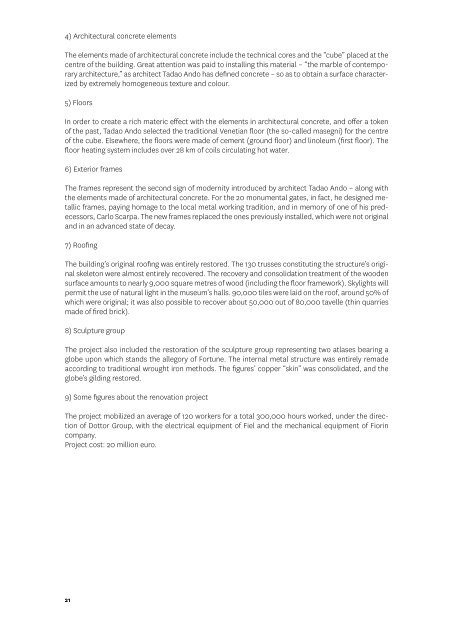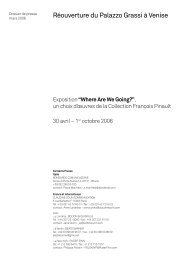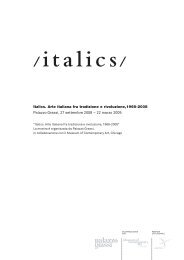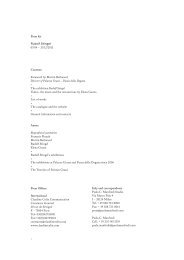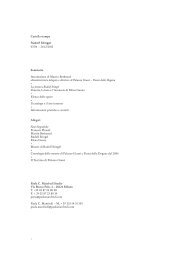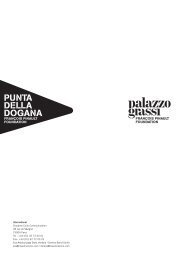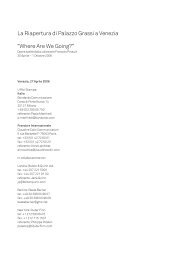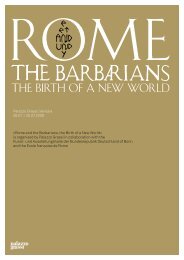Press Kit (pdf file - 445,85 Kb) - Palazzo Grassi
Press Kit (pdf file - 445,85 Kb) - Palazzo Grassi
Press Kit (pdf file - 445,85 Kb) - Palazzo Grassi
You also want an ePaper? Increase the reach of your titles
YUMPU automatically turns print PDFs into web optimized ePapers that Google loves.
4) Architectural concrete elements<br />
The elements made of architectural concrete include the technical cores and the “cube” placed at the<br />
centre of the building. Great attention was paid to installing this material – “the marble of contemporary<br />
architecture,” as architect Tadao Ando has defined concrete – so as to obtain a surface characterized<br />
by extremely homogeneous texture and colour.<br />
5) Floors<br />
In order to create a rich materic effect with the elements in architectural concrete, and offer a token<br />
of the past, Tadao Ando selected the traditional Venetian floor (the so-called masegni) for the centre<br />
of the cube. Elsewhere, the floors were made of cement (ground floor) and linoleum (first floor). The<br />
floor heating system includes over 28 km of coils circulating hot water.<br />
6) Exterior frames<br />
The frames represent the second sign of modernity introduced by architect Tadao Ando – along with<br />
the elements made of architectural concrete. For the 20 monumental gates, in fact, he designed metallic<br />
frames, paying homage to the local metal working tradition, and in memory of one of his predecessors,<br />
Carlo Scarpa. The new frames replaced the ones previously installed, which were not original<br />
and in an advanced state of decay.<br />
7) Roofing<br />
The building’s original roofing was entirely restored. The 130 trusses constituting the structure’s original<br />
skeleton were almost entirely recovered. The recovery and consolidation treatment of the wooden<br />
surface amounts to nearly 9,000 square metres of wood (including the floor framework). Skylights will<br />
permit the use of natural light in the museum’s halls. 90,000 tiles were laid on the roof, around 50% of<br />
which were original; it was also possible to recover about 50,000 out of 80,000 tavelle (thin quarries<br />
made of fired brick).<br />
8) Sculpture group<br />
The project also included the restoration of the sculpture group representing two atlases bearing a<br />
globe upon which stands the allegory of Fortune. The internal metal structure was entirely remade<br />
according to traditional wrought iron methods. The figures’ copper “skin” was consolidated, and the<br />
globe’s gilding restored.<br />
9) Some figures about the renovation project<br />
The project mobilized an average of 120 workers for a total 300,000 hours worked, under the direction<br />
of Dottor Group, with the electrical equipment of Fiel and the mechanical equipment of Fiorin<br />
company.<br />
Project cost: 20 million euro.<br />
21


